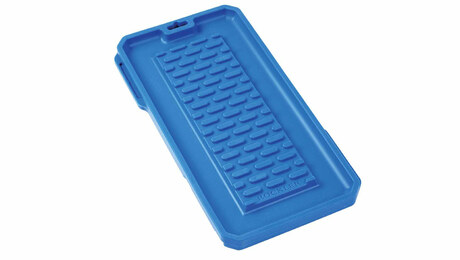Veritas - Tool Review of the Veritas – Camber Roller Assembly for the Mk.II Honing Guide
The new cambered roller for the Veritas Mk.II honing guide lets you put a slight curve on a plane blade
When Veritas introduced the Mk.II, I felt they had the perfect honing guide. After using it for a while, though, I realized it might be a little too perfect.
The wide roller on the Veritas guide ensures a flat bevel on the blade. That’s fine for bench chisels, but on wide blades used for planing, I prefer a bevel with a slight curve (or camber) from one edge to the other. A camber helps reduce plane tracks—the scoring lines often created by the blade corners as you plane.
|
 |
| Cambered wheel yields cambered edge. Veritas now offers a cambered roller for its Mk.II honing guide. It lets you hone a slight curve on a plane blade, so the corners are less likely to dig in and leave ridges on the wood surface. |
When honing without a guide, or when using a guide with narrow wheels, I produce the camber by placing pressure on the outer edges of the blade. But because of the wide roller on the Mk.II, I couldn’t get the same cambered results.
|
 |
| Rock on. As you move the jig back and forth on the sharpening stone, the cambered wheel allows you to rock the blade from side to side, in a controlled manner, to generate the curved edge. |
Someone at Veritas must have read my mind because they recently introduced a cambered roller assembly for the Mk.II. The assembly mounts in seconds. A 1/2-in.-wide flat center section of the roller provides solid footing for flat bevels, while the outer sections are curved for easy blade cambering. It worked great.
|
 |
| Shaving tells the tale. When properly cambered, the plane iron produces a shaving that is thicker in the middle and feathery at the edges. |
The cambered roller sells for $21.70 at www.leevalley.com.
Fine Woodworking Recommended Products

Lie-Nielsen No. 102 Low Angle Block Plane

Rockler Silicone Sharpening Stone Tray























Log in or create an account to post a comment.
Sign up Log in